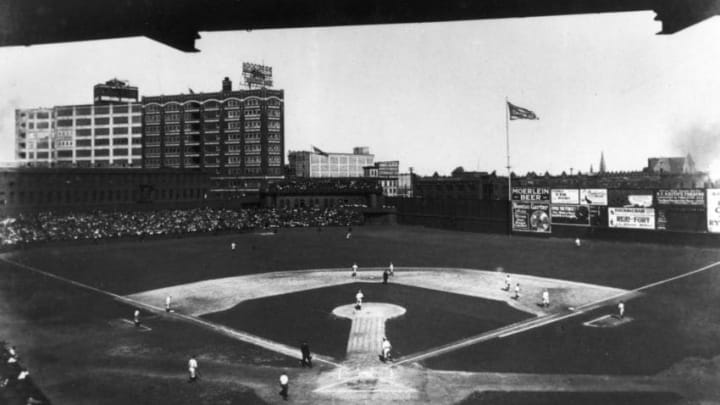Phillies shortstop Mickey Doolin: Obscure all-time leader
Major League Baseball career leader Mickey Doolin – now there’s a phrase nearly no one, even those interested in baseball history, has ever heard. Yet, as a result of social media and one of the extremely professional-looking posts on a Facebook group page called “20th Century Baseball/Shock Me,” you will now learn something about a former Philadelphia Phillies regular.
Some MLB fans know the name Mickey Doolin, particularly historians of Philadelphia baseball, but most of them likely couldn’t – with even a dozen wild guesses – name the category Doolin is the career leader in.
The post I saw was called “Plate Appearances Leaders for Each Batting Order Position since 1901.”
Some people do these kinds of sorts for fun, one assumes. Batting order positions are not something many fans think a lot about, particularly with the lineup tinkering that’s so prevalent in this century, but at one time, and for many decades, MLB players settled into positions in batting orders.
Anyhow, the post in question involved a few players fans might guess – Rickey Henderson leading off (13,122 PA), Tris Speaker batting third (11,334 PA), for example, and a few surprises – no Babe Ruth, Charlie Grimm in the six-hole (3,729 PA) and Eddie Murray batting cleanup (8,775 PA).
Mickey Doolin, however, was the one name on the list I wasn’t even sure I’d ever heard. Oh, the name, sure – it’s common enough – but could I have said he was an MLB player? No.
However, Michael Joseph Doolin is the MLB career leader in batting seventh. He hit there 5,415 times, according to “20th Century Baseball.”
I decided to do a quick check and hit Doolin’s front page and game logs in Baseball Reference to make sure the guy had at least 5,415 plate appearances and to make sure the better part of them for at least a while were in the seven-hole.
Sure enough, he had 6,612 PA in his career and from 1909-11, covering 1,728 trips to the plate for the Philadelphia Phillies, Doolin batted seventh for every PA but two – once he hit fifth and once he pinch-hit ninth in the order.
A good-enough-for-government-work check, right?
By now, you’ve probably mulled over the importance of batting seventh more than anybody else, even at the MLB level. The words “this Mickey Doolin must not have been much of a hitter” probably slid across your mind.
You’d be right. The Ashland, Pa., native, who played the best part of his career with the Phillies, had a .230 career average, a .585 career OPS and never hit more than two home runs in a season.
As it turns out, Doolin is perhaps the classic example of the old-fashioned, “good-field, no-hit, middle infielder.” He was a shortstop and he turned one particular skill into a 13-year career despite having four years with averages below .205.
Mickey Doolin was a ridiculously effective thrower from his position. As the Society for American Baseball Research notes, he led the National League five times in both assists and double plays in a seven-year stretch. Sportswriter Fred Lieb once wrote that Doolin “could throw standing on his head.”
He also led the NL in fielding percentage once and in an era when the league-average fielding percentage was .930 at short, his figure was .940. The fields before and during World War I were considerably rougher than they became by even as early as 1960.
For comparison’s sake, Ozzie Smith exceeded his his peers’ average fielding figure by 12 points, merely two points better than Doolin, but the Wizard of Oz posted a career fielding percentage of .978.
So, Mickey Doolin got to hang around long enough to show up on a weird list on Facebook nearly 70 years after his death.
